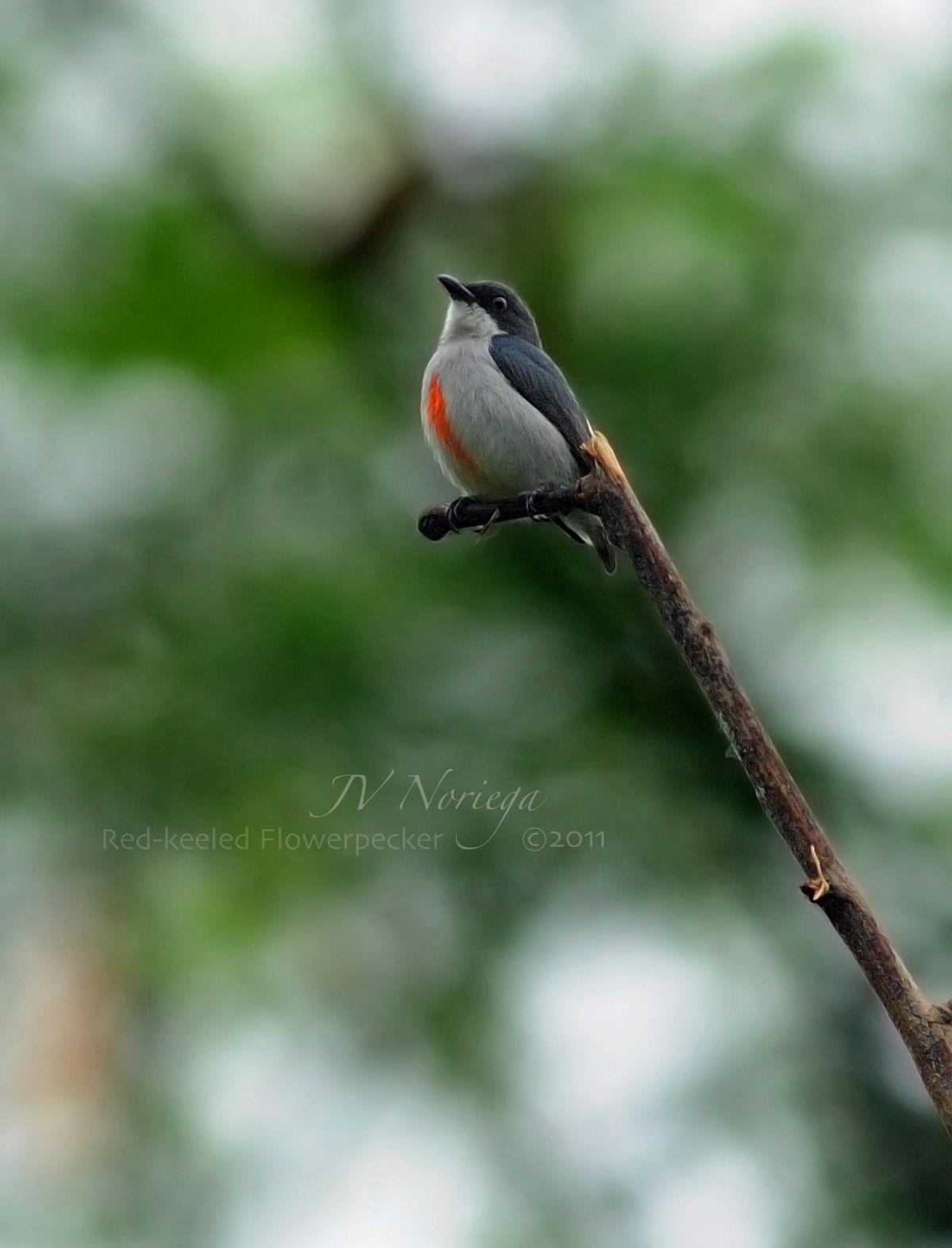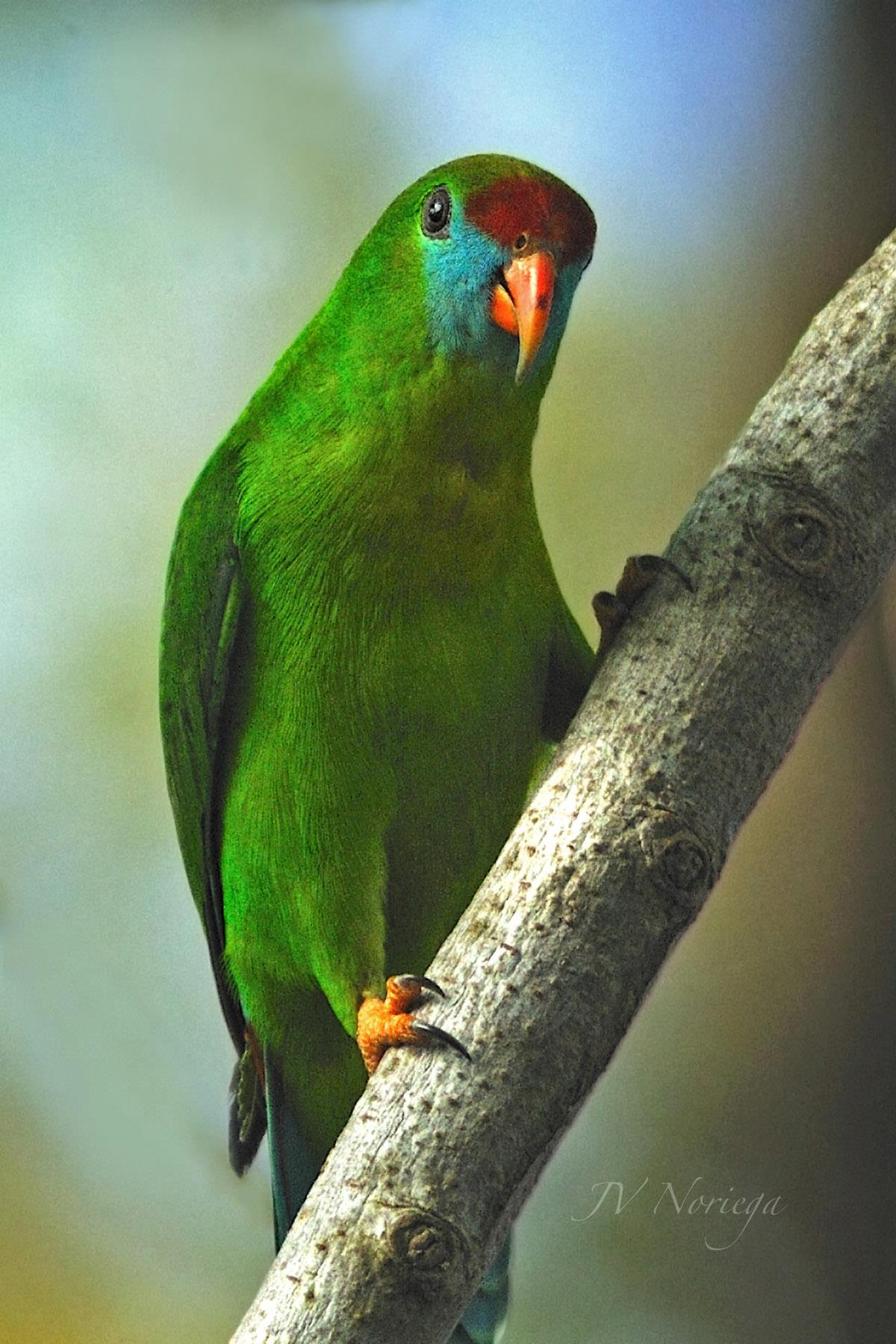A birdwatcher lands in just the right spot! JV Noriega writes about the beautiful and unusual birds he has seen and photographed right in his neighborhood of Loyola Grand Villas.
space
Wild Birds of Loyola Grand Villas
text and photos by JV Noriega
1999 – A Green Place to Live
My wife and I decided to live somewhere away from the heart of the city. We wanted a place where there was less pollution and where the sounds of vehicles from the distant city traffic hum could not be heard. But of course, the place should not be too far away from work, school, and shopping centers. After so much scouting and deciding on practical considerations, we ended up zeroing-in on a small mountainside village called Loyola Grand Villas.. Not many knew about this hillside residential community way then.. so it was scarcely inhabited by the time we ventured to this area. The terrain was hilly, had lots of trees, and had a great vista of the Marikina valley below, and the Sierra Madre mountains beyond.. A kilometer uphill from the village was Katipunan Ave., La Vista subdivision, the perimeter fences of Ateneo de Manila University, the Balara Filters reservoir and further on, the University of the Philippines, Diliman. The topography and location of the village had the ingredients of a good habitat for wild avian creatures.
Not having the luxury of time to go on birding trips to the many birding destinations around the country due to my hectic work load, I pursued my interest in bird photography within the confines of my village and nearby areas like UP Diliman and some open riverside grasslands in the Marikina area. After years of photographing birds and building up my personal lifelist of birds, I realized that 60% of of my lifers were taken from my village. I have even encountered and photographed uncommon species that I would have seen and photographed only in deep forests and distant mountain ranges. Since the Sierra Madre mountains are visible and not too far by line of sight from my area, I am guessing that the wild birds in my village are transients that find temporary refuge in this lush hillside by a river. Also, a few clean fresh water streams flowing down from Balara filters and La Vista village flow through my village exiting to the Markina river, providing a water and food source for these birds.





Residents of my village never fail to stop and ask what I was taking photos of as I moved around my favorite birding spots within the village. As their curiosity grew, some started taking their kids along and even brought their own binoculars to learn more about our wild birds in the village. So to make things easier to explain and spread the information, I decided to create a Facebook page about the Wild Birds of LGV as a form of reference for common species that residents would often see in their backyards, gardens and open spaces. Click on this link to visit the Wild Birds of LGV facebook page.
Bird List for Loyola Grand Villas
Some common and uncommon endemic and migratoy species that I have photographed, spotted and heard in LGV are the following:
- Whiskered Tern Chlidonias hybridus
- Little Egret Egretta garzetta
- Black-crowned Night-Heron Nycticorax nycticorax
- Yellow Bittern Ixobrychus sinensis
- Barred Rail Gallirallus torquatus
- White-breasted Waterhen Amaurornis phoenicurus
- Common Moorhen Gallinula chloropus
- White-eared Brown-Dove Phapitreron leucotis
- Spotted Dove Streptopelia chinensis
- Zebra Dove Geopelia striata
- Common Emerald Dove Chalcophaps indica
- Colasisi Loriculus philippensis
- Philippine Hawk-Cuckoo Cuculus pectoralis
- Plaintive Cuckoo Cacomantis merulinus
- Brush Cuckoo Cacomantis variolosus
- Philippine Drongo-Cuckoo Surniculus velutinus
- Lesser Coucal Centropus bengalensis
- Philippine Coucal Centropus viridis
- Grass Owl Tyto capensis
- Brown Hawk-Owl Ninox scutulata
- Common Kingfisher Alcedo atthis
- Ruddy Kingfisher Halcyon coromanda
- White-throated Kingfisher Halcyon smyrnensis
- White-collared Kingfisher Todirhamphus chloris
- Spotted Wood-Kingfisher Actenoides lindsayi
- Blue-tailed Bee-eater Merops philippinus
- Coppersmith Barbet Megalaima haemacephala
- Philippine Pygmy Woodpecker Dendrocopos maculatus
- Barn Swallow Hirundo rustica
- Pied Triller Lalage nigra
- Yellow-vented Bulbul Pycnonotus goiavier
- Black-naped Oriole Oriolus chinensis
- Large-billed Crow Corvus macrorhynchos
- Philippine Magpie-Robin Copsychus saularis
- Blue Rock-Thrush Monticola solitarius
- Golden-bellied Flyeater Gerygone sulphurea
- Arctic Warbler Phylloscopus borealis
- Striated Grassbird Megalurus palustris
- Bright-capped Cisticola Cisticola exilis
- Narcissus Flycatcher Ficedula narcissina
- Blue-and-white Flycatcher Cyanoptila cyanomelana
- Grey Wagtail Motacilla cinerea
- White-breasted Wood-swallow Artamus leucorynchus
- Long-tailed Shrike Lanius schach
- Brown Shrike Lanius cristatus
- Crested Myna Acridotheres cristatellus
- Olive-backed Sunbird Cinnyris jugularis
- Red-keeled Flowerpecker Dicaeum australe
- Lowland White-eye Zosterops meyeni
- Eurasian Tree Sparrow Passer montanus
- Scaly-breasted Munia Lonchura punctulata
- Chestnut Munia Lonchura malacca

2012 – Changes and Developments
Due to diminishing open fields, grasslands and empty lots, the grassbirds have been slowly displaced, moving on to more uninhabited areas outside of the village close to the Marikina River. However, the smaller forest birds can still be found and heard, as many areas of the village have full-grown trees..
Just recently, the village association has self-declared LGV as a bird sanctuary, and we have designated many open spaces reforestation areas. We have started planting fruit-bearing trees and bamboo within these unutilized open areas, hopefully to provide a food source and shelter for our wild birds in the village.
A few months ago, a night roving security guard found a weakened juvenile Black-crowned night heron by an empty grassy lot, and brought it to the security HQ for safe keeping in a cage, fearing that it could easily be devoured by a python . They contacted me the following morning to identify the bird, since they thought it was some kind of Kingfisher. It was a juvenile BCNH that probably just got separated from its parents, leaving it hungry and weak.. I checked it and it had to injury or broken bones or wings whatsoever, and upon feeding it fresh water, it started becoming hyper active making me decide on releasing it back to the wild as soon as possible. I had known of a large acacia tree where adult BCNHs roost during daytime, so we released it in the area, hoping that some adults would find him and adopt him.

Ultimately, I dream of having the time and opportunity to visit more birding destinations in the Philippines, and be able to photograph more lifers for my personal list and satisfaction, but I guess that will remain a dream for now. In the meantime my passion for birding and bird photography can still be fulfilled without having to travel far and spend a fortune. I guess I am lucky to be sharing my community with wild birds, and as they provide us people with the inspiration to safeguard our natural surroundings, we too can give them something in return by providing food sources and fresh clean water for their survival. We have had a very successful bird walk in the village headed by Jops and Maia, and there was great response and participation from our residents.. an awareness program that should lead to providing a better symbiotic relationship between man and wild avian creatures.




No. 24 in JV’s list: A pair of them peck at our bedroom’s French doors and perch on the ring of our basketball goal. Took a phone photo and sent it to a friend for ID. My wife and I welcome their “Good morning” taps.
That’s so interesting! Why are they pecking on the door?